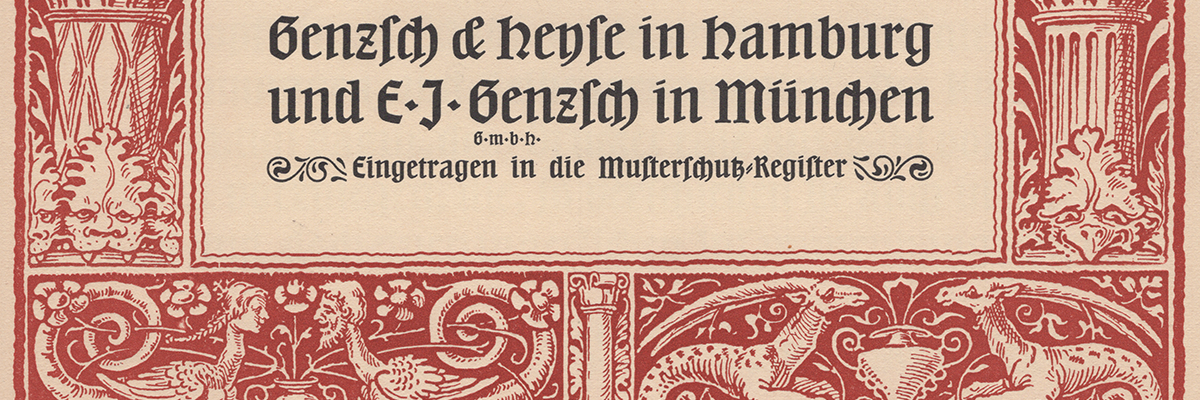
Weird but worthwhile: Otto Hupp’s typefaces for Genzsch & Heyse
with
Dan Reynolds
During the second half of the 19th century, the Genzsch & Heyse typefoundry set multiple trends in German typography. In the 1860s, it was the first company to successfully market Old Style serif typefaces (imported from the UK). A decade later, it published a revised form of late-Medieval Schwabacher types. That product proved so popular that 30+ other foundries—from St. Louis, Missouri to Turin, Italy—sold it, too. Yet, Genzsch & Heyse’s greatest innovation was the way it commissioned work from freelance designers. Even though that became the norm in the early 20th century, it wasn’t a standard tactic in the 19th. This talk will examine how Genzsch & Heyse began outsourcing typeface design, looking at the work of Otto Hupp as an example.
When Otto Hupp received his first commission from Genzsch & Heyse, he was a young illustrator who had recently arrived in Munich from Düsseldorf. Their working relationship lasted for 24 years, during which time he designed many sets of initials and ornaments, as well a few typefaces for the foundry, including the seminal Neudeutsch (1900). Although Hupp’s practice primarily focused on making heraldic designs and producing publications on heraldry, he collaborated with German typefoundries for 60 years. After 1904, his subsequent typefaces—including Liturgisch, Hupp-Fraktur and Hupp-Unziale—were published by Gebr. Klingspor and the German Imperial Printing House. Hupp’s last typefoundry commission was Gebr. Klingspor’s annual keepsake calendar for 1940.
The Herb Lubalin Lectures are recorded and made available here and on Vimeo with the generous support of TypeCulture.
About Dan Reynolds

